LisbonLisboaPortugal.com
The best independent guide to Lisbon
LisbonLisboaPortugal.com
The best independent guide to Lisbon
Lisbon in July: Is it a good month to visit?
July is Lisbon turned up to maximum. Temperatures soar past 30°C most days, tourist numbers reach their annual peak, and the city adopts a frenetic energy that continues well past midnight. For those who thrive on urban electricity and don't mind sharing their experiences with thousands of others, July delivers the full Portuguese summer experience in all its sun-soaked glory.
The month divides visitors sharply. Some find the combination of crushing heat and dense crowds overwhelming, spending more time queuing than exploring and finding the city's charm buried under the sheer weight of tourism. Others revel in July's possibilities: beach days that stretch late into the evening, outdoor festivals every weekend, restaurants that serve dinner at midnight, and a contagious holiday atmosphere where the entire city feels like one enormous celebration.
The Atlantic provides essential relief throughout, with beaches from Carcavelos to Costa da Caparica offering blissful escapes when the city becomes too intense. These coastal retreats, just 20-30 minutes from Lisbon, become as much a part of the July experience as the city itself, offering cool waters and sea breezes that make the heat not just bearable but part of the pleasure.
Your July experience largely depends on your tolerance for heat and crowds. If you wilt in 30°C heat or get frustrated with masses of people, July will test your patience. But if you want to experience Lisbon at its most alive, when every sunset launches a thousand Instagram posts and the boundary between night and day pleasantly blurs, this is your month. Just bring sunscreen, patience, and the deepest pockets of the year.
This guide will help you make the most of peak summer Lisbon, to capture the season's undeniable magic.
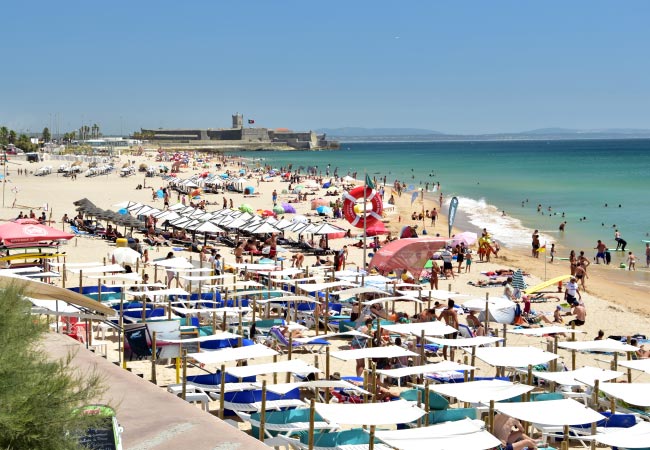
Carcavelos beach is a great destination to head to on a hot summer’s day, but it will be busy at weekends
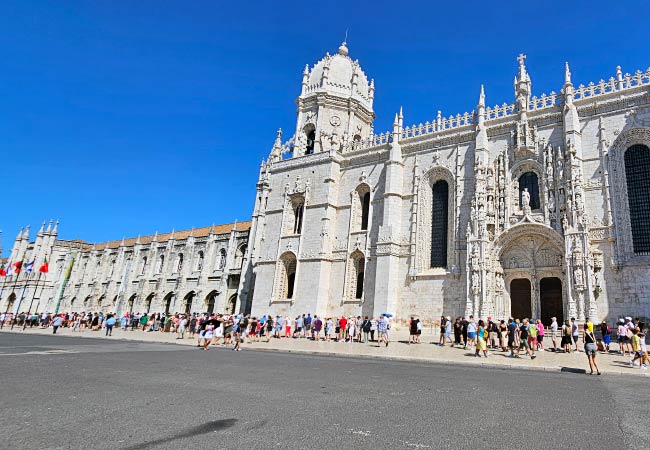
The long queue to enter the Mosteiro dos Jerónimos
Lisbon Weather in July
July is the height of summer in Lisbon, bringing consistently hot, dry, and sun-drenched weather.
Average daytime temperatures soar to 28C (82F), with warm nighttime minimums of 18C (64F). The city basks in over 11 hours of brilliant sunshine daily, while rain is almost non-existent, with an average of just two wet days contributing to a negligible 5mm of precipitation.
While the averages suggest consistent heat, July can also bring intense heatwaves, when hot, dry winds from North Africa push temperatures well above 35C (95F). The heat is most pronounced in the sheltered, central districts of the city. A persistent north-westerly wind, known as the Nortada, often provides a welcome cooling breeze, especially in the afternoons and along the coastline.
For visitors, the intensity of the sun is the most significant factor, and the UV index is extremely high, making sunscreen and a hat essential. The midday heat can be draining, and sightseeing is best enjoyed in the early mornings or late afternoons.
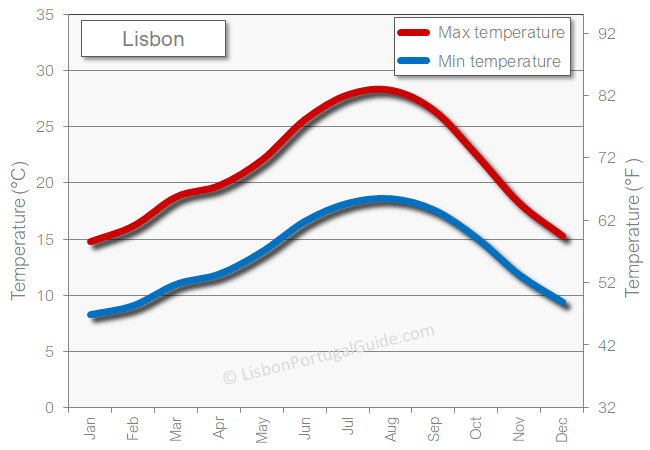
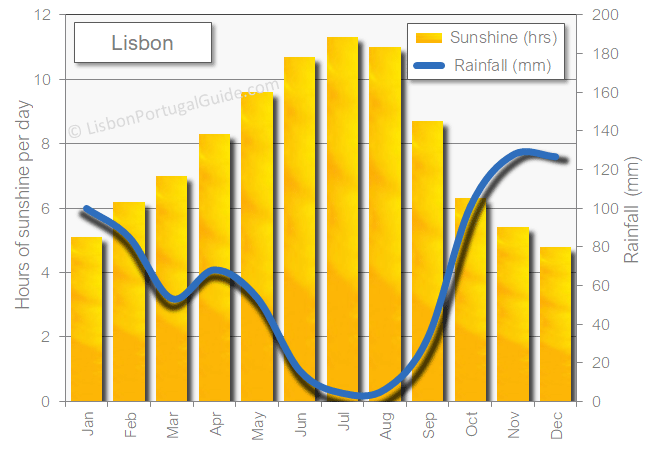
Highlights of Lisbon in July
July is Lisbon at its most vibrant and sun-drenched. The city operates in full summer mode, with long, hot days giving way to lively nights. Some of the highlights of July include:
• Belém District: Explore the grand monuments of Belém, where a pleasant breeze often comes off the Tagus River. Visit the iconic Belém Tower and the magnificent Jerónimos Monastery before finding a shady spot to enjoy the original custard tarts from Pastéis de Belém - Belém guide.
• Alfama & São Jorge Castle: Tackle Lisbon's oldest neighbourhood in the cooler morning hours. Climb the labyrinthine streets of Alfama to reach the São Jorge Castle at its summit. The reward is a commanding panoramic view and a welcome breeze from the castle’s ancient ramparts. - Alfama guide.
• Beach Day Trips: Cool off with a classic beach day on the Atlantic coast. A short and scenic train ride takes you to the golden sands of Carcavelos, popular with locals and surfers, or a little further to the charming resort town of Cascais, with its sheltered beaches and lively town centre. - Lisbon beaches.
• Bairro Alto Nightlife: As evening falls, head uphill to the Bairro Alto district, the epicentre of Lisbon’s nightlife. The neighbourhood’s narrow streets transform into a massive open-air party, as dozens of small bars serve drinks to crowds socialising on the cobblestones.
• Adventure in Sesimbra: For an active day trip, head to the beautiful coastline of Sesimbra, and the Arrábida Natural Park. The clear waters and dramatic cliffs are a natural playground for adventure sports like sea kayaking to hidden coves or coasteering along the rugged shoreline.
• The Miradouros: As the day's heat subsides, join the locals at one of the city's famous viewpoints (miradouros). Terraces like Miradouro de Santa Catarina become lively social hubs in the evenings, with kiosk bars serving cold drinks as the sun sets behind the 25 de Abril Bridge- Lisbon viewpoints..
• Sintra's Cool Hills: Escape the intense city heat in the misty, forested hills of Sintra. The higher altitude and dense tree cover provide a significantly cooler climate for exploring the romantic Pena Palace and the mysterious, grotto-filled gardens of Quinta da Regaleira. - Sintra day trip guide.
• Sunset Boat Tour: Experience Lisbon from the water on a sunset cruise along the Tagus River. It’s the perfect way to cool down in the evening breeze while watching the city's seven hills glow in the golden light, sailing past landmarks like the Belém Tower.
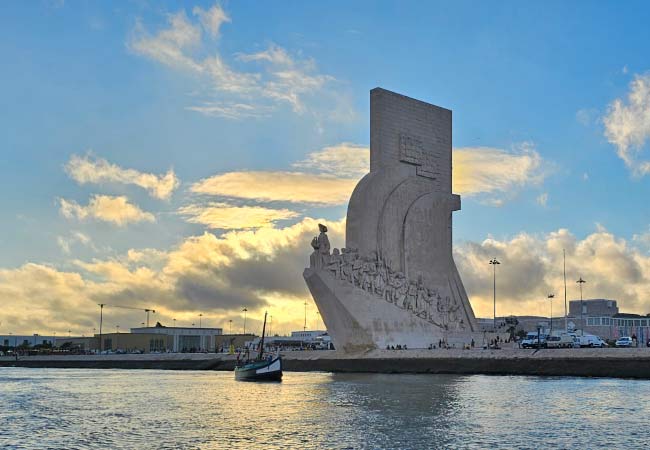
A sunset cruise passing the Padrão dos Descobrimentos in Belem
Find Your Perfect Stay for July
July marks the heart of Lisbon's high season, and accommodation is in extremely high demand. The best hotels and apartments are often booked out months in advance, so booking early isn't just recommended. It is essential for securing a good price in a desirable location.
To see what's currently available, use the interactive map below. Simply enter your dates to explore options and compare live prices across the city.
Booking.comLisbon's Beaches in July
July in Lisbon is defined by the intense heat of high summer, making a trip to the coast less of a luxury and more of an essential escape. Expect a vibrant, festival-like atmosphere as you join the city-wide exodus to the shore, where the cool Atlantic offers the ultimate relief from the baking sun.
The train from Cais do Sodré will be packed, ferrying sun-seekers to the popular beaches along the Cascais line. Praia de Carcavelos operates at full capacity, its vast sands transformed into a sprawling, colourful mosaic of umbrellas and beach towels. Further on, the town beaches of Cascais, Praia da Conceição and Praia da Duquesa, are frenetic but festive. Their calm waters are a blessing, offering a quick and easy way to cool down before diving into the town's shaded streets for an ice cream.
For those willing to travel a bit further for more space, the Costa da Caparica is a wise choice. While the main access points are busy, its seemingly endless stretch of sand means you can always find a quieter spot by walking a little further down the coast.
For a true slice of paradise, the journey south to the Serra da Arrábida Natural Park is the ultimate reward. Here, secluded coves like Praia do Creiro boast stunningly clear, turquoise waters that feel a world away from the city. Be warned that their beauty is no secret; an early start is essential in July to secure your spot in one of these breathtaking coves.
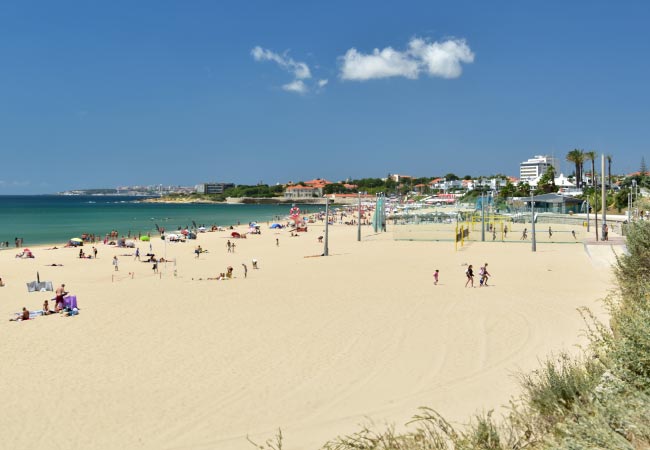
The Praia de Carcavelos
Day Trips from Lisbon in July
July can be a good month for sightseeing and day trips; just plan to start early in the day to avoid the midday heat. Some of the best day trips from Lisbon include:
Sintra - A hill town filled with romantic palaces, including the colourful Pena Palace and the mysterious Quinta da Regaleira, all surrounded by cool forests that provide relief from the summer heat - Sintra guide
Cascais - Lisbon's favourite beach resort, combining sandy beaches with a charming town centre and easy train connections from Cais do Sodré station - Cascais guide
Setúbal - A working fishing port south of Lisbon, known for exceptional seafood restaurants and as the gateway to the beautiful beaches of the Arrábida Natural Park - Setúbal guide
Óbidos - A small medieval town enclosed by ancient walls, famous for its cherry liqueur (ginjinha) served in chocolate cups and picturesque white houses - Óbidos guide
Évora - The historic capital of the Alentejo region, featuring a Roman temple, medieval cathedral, and the macabre Chapel of Bones - Évora guide
Costa da Caparica - A 15km stretch of Atlantic beaches across the river from Lisbon, popular with surfers and locals looking for waves and beach bars.
Sesimbra - A fishing village turned beach resort with excellent seafood restaurants and a protected bay perfect for families with young children - Sesimbra guide
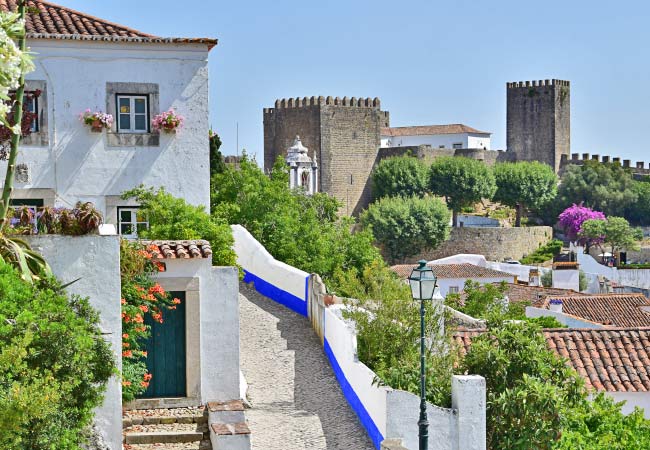
Óbidos is a traditional Portuguese walled city
Adventures for July
As summer truly arrives, July's hot days create the perfect conditions for adventures along Lisbon's coastline. Some of the best include:
Kayaking the Sesimbra Coast: Paddle along one of Portugal's most scenic shorelines to discover hidden coves and the secluded 'wild beach' of Praia do Ribeiro do Cavalo, which is only accessible by sea. More adventurous kayakers can continue onwards to explore the magnificent Boca do Tamboril sea cave - Kayak tours from Lisbon
Coasteering near Sesimbra: For a truly thrilling experience, try this unforgettable mix of cliff scrambling, sea swimming, and daring jumps from heights of up to 8 metres into crystal-clear Atlantic waters. It's an incredible way to experience the raw beauty of Portugal's rugged coast. Coasteering by GetYourGuide
Surfing at Costa da Caparica: Catch the perfect wave at Portugal’s premier surfing destination. Whether you're a complete beginner looking for a gentle lesson or an experienced surfer seeking a challenge, the expansive beaches here have a wave for everyone. Numerous local surf schools offer expert instruction and equipment rental.
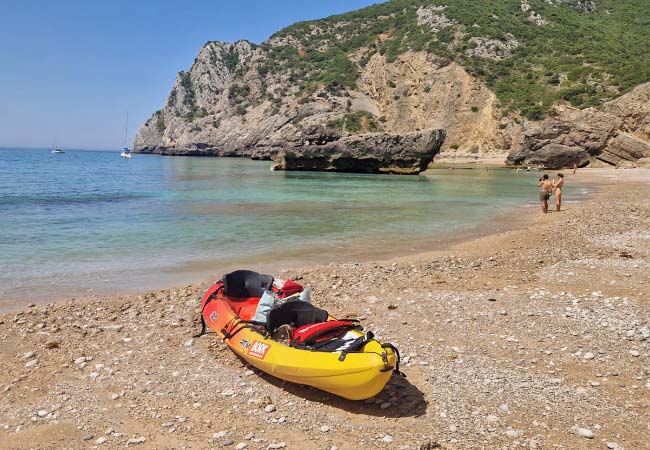
The Praia do Ribeiro do Cavalo beach

5-Days in Lisbon for July
This five-day itinerary explores Lisbon's layers of history and culture, from its ancient foundations to its contemporary edge. A trip in July reveals the city at its most vibrant, with long, sunlit days and warm evenings.
Day 1: The Historic Heart: Baixa, Alfama, and Graça
Morning: Baixa
Lisbon's elegant downtown, the Baixa district, is a testament to 18th-century ambition, rebuilt on a grand grid system after the 1755 earthquake. At its heart lies the immense Praça do Comércio, a vast, sunlit plaza whose magnificent archways and colonnades open directly onto the Tagus River.
The open layout of this district absorbs the July sun, making an early start advisable for comfortable exploration. The main artery, Rua Augusta, is a lively pedestrian thoroughfare paved with traditional mosaic cobblestones, the calçada portuguesa. Nearby, the Santa Justa Lift stands as a wrought-iron marvel of the industrial age, its viewing platform affording superb perspectives over Baixa's rooftops and the castle-crowned hill opposite.
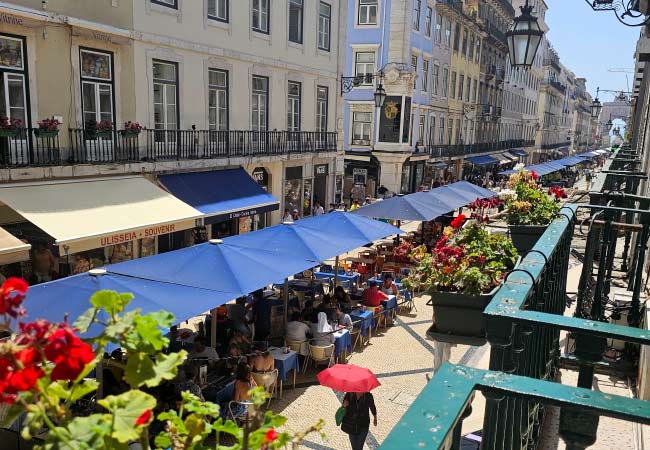
Afternoon: Alfama
As the day's heat builds, the shaded, labyrinthine alleys of Alfama offer a welcome change of atmosphere. This is the city's oldest quarter, a delightful tangle of steep stairways, hidden courtyards, and historic homes that survived the great earthquake. Deep within its maze sits the Lisbon Cathedral (Sé de Lisboa), a formidable structure whose ancient stone walls have stood sentinel for centuries.
The district's topography creates natural viewpoints, or miradouros. The Miradouro das Portas do Sol is a sun-drenched terrace that presents the classic panorama of Alfama's terracotta roofs cascading towards the river. Crowning the entire district is the Castelo de São Jorge. Its ancient walls and fortifications tell stories of Lisbon's Moorish past, and its ramparts offer some of the most commanding views across the entire sunlit cityscape.
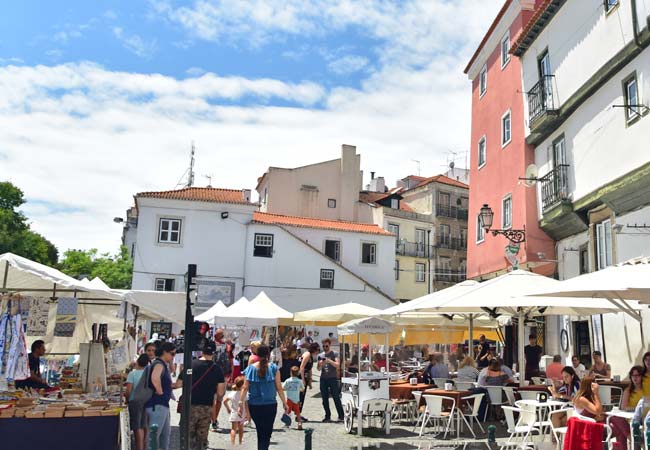
Day 2: Belém and Alcântara
Morning: Belém
Belém is a monumental riverside district forever linked to the Age of Discoveries. Its white limestone landmarks seem to glow under the bright July sun. The Mosteiro dos Jerónimos, a UNESCO World Heritage site, is a masterpiece of Manueline architecture, its intricate stonework financed by the spice trade and reflecting the nation's former global power.
Along the waterfront, the elegant Torre de Belém stands as a symbol of the city, a fortified tower that once guarded the entrance to the harbour. Nearby, the Padrão dos Descobrimentos (Monument to the Discoveries) juts out over the water like the prow of a great ship, celebrating the country's explorers. An essential culinary tradition in Belém is tasting the original pastel de nata from the Pastéis de Belém bakery, a recipe guarded since 1837. Queues for these sites can be long in July, making an early arrival beneficial.
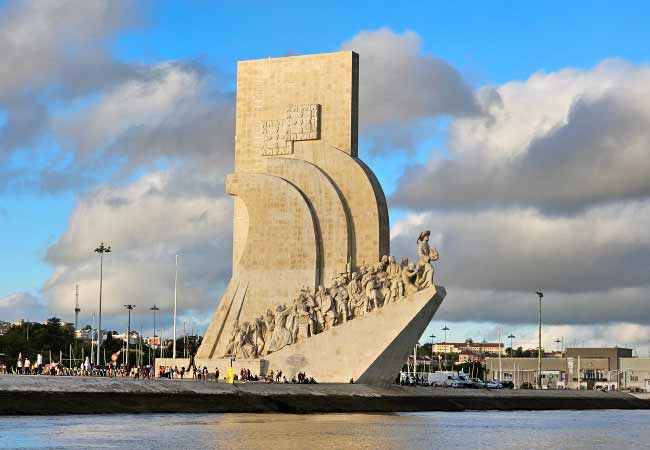
Afternoon: Alcântara
A short journey from Belém is LX Factory, a former 19th-century industrial complex reborn as a dynamic hub of creativity. Housed within the old warehouses is a curated world of independent shops, artist studios, and unique restaurants. Its industrial-chic aesthetic provides a compelling contrast to the historic grandeur of Belém. A highlight is the Ler Devagar bookstore, ingeniously arranged around an old printing press. The complex is also home to several rooftop bars, which offer excellent views of the immense 25 de Abril Bridge and the river.
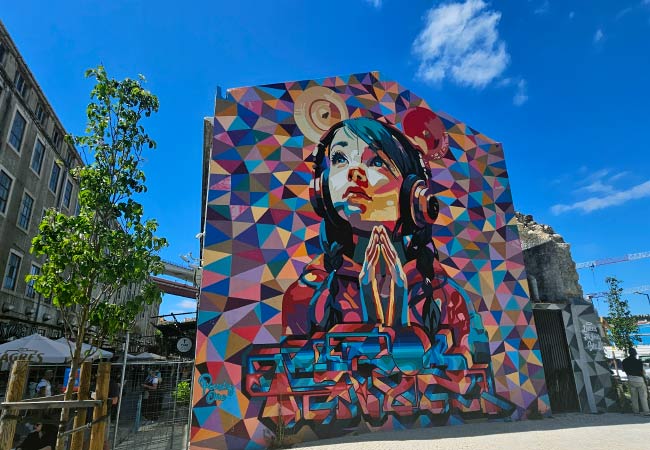
Day 3: Day Trip to Sintra
A day trip to Sintra offers a refreshing escape into a world of fairytale palaces and mystical gardens. Tucked into lush, forested hills, the town enjoys a cooler microclimate, a welcome counterpoint to Lisbon's urban heat in July.
The train from Lisbon's Rossio Station delivers you to a realm of romanticism. Given its popularity, booking tickets for Sintra's palaces online well in advance is essential during the peak summer season. High on a forested peak sits the Palácio da Pena, a fantasy of 19th-century design. Its bold red and yellow towers, crenellated walls, and eclectic mix of architectural styles are exceptionally vivid against a clear summer sky.
Sintra also offers deeper mysteries. The estate of Quinta da Regaleira is a landscape of esoteric symbolism, with gardens that conceal grottoes, hidden tunnels, and the astonishing Initiation Well, a subterranean tower that plunges deep into the earth. For a different kind of history, the Castelo dos Mouros drapes its ancient stone ramparts over a neighbouring peak. A walk along its walls provides a windswept journey back in time, with spectacular views over the hills and out to the distant Atlantic. Down in the valley, Sintra's historic town centre is charming, with opportunities to sample local pastries like queijadas and travesseiros.
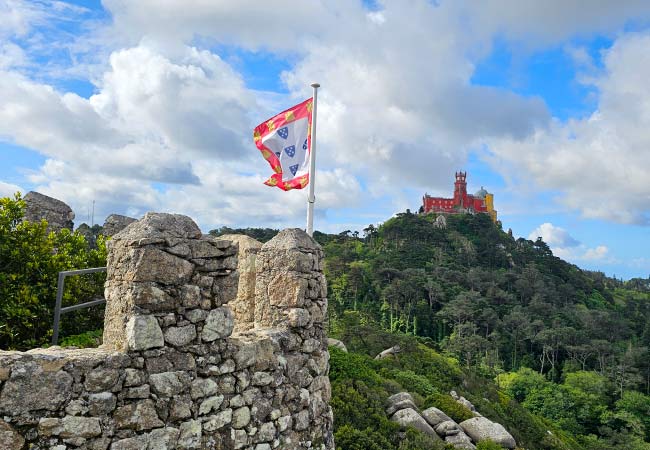
Day 4: Cascais or a Beach Day
This day is an Atlantic interlude, designed to embrace the best of Portugal's summer weather with a choice between a sophisticated coastal town and a relaxing day on the sand.
Option 1: Cascais
The train line terminates in Cascais, a formerly humble fishing village that became a refined seaside resort. Its historic core is a charming collection of pedestrianised streets, boutiques, and seafood restaurants perfect for a long July lunch. The formidable Cidadela de Cascais has been repurposed as a contemporary arts district. A walk along the oceanfront path leads to the Boca do Inferno ("Hell's Mouth"), a dramatic cliff formation where the Atlantic has carved a sea arch, showcasing the power of the ocean.
Option 2: Beach Day
For a classic summer experience, the vast stretch of golden sand at Praia de Carcavelos is the heart of the region's beach culture. The cool Atlantic waters offer a refreshing break from the heat. The beach is a lively hub for swimming and surfing, but also has ample space for simply relaxing under an umbrella. A line of cafes and bars along the promenade provides all the necessary amenities for a full day by the sea.

Day 5: Elegant Quarters and Modern Lisbon
Morning: Príncipe Real, Estrela, and Bairro Alto
Príncipe Real is a fashionable district known for its 19th-century mansions, which now house concept stores, antique shops, and art galleries. Its centrepiece is the lush Jardim do Príncipe Real, whose enormous cedar tree provides a canopy of shade. A short walk away is the quieter, more residential district of Estrela. It is dominated by the magnificent, dome-topped Basílica da Estrela and the lovely Jardim da Estrela across the street, a favourite park for local families. Nearby is the Bairro Alto, a neighbourhood with a dual identity. By day, it is a quiet grid of residential streets; after dark, it transforms into the epicentre of Lisbon's nightlife.
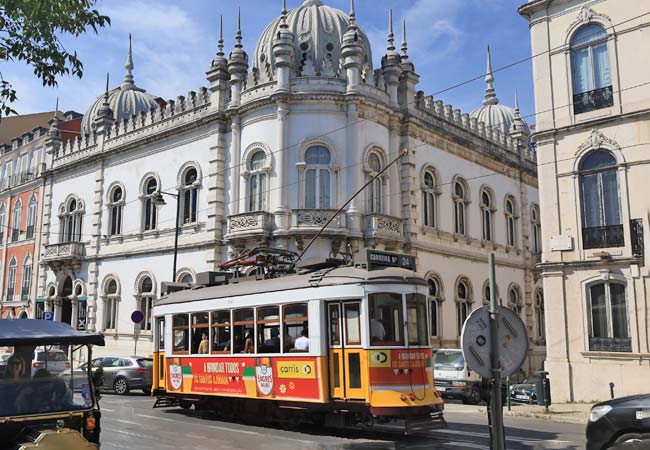
Afternoon: Parque das Nações
The Metro's red line leads to Oriente station and the striking modernity of Parque das Nações. This entire district was built for the Expo '98 world's fair and presents Lisbon's vision of the future through its daring contemporary architecture. The premier attraction is the Oceanário de Lisboa, a world-class aquarium that offers a cool, air-conditioned journey through the planet's marine ecosystems. Its massive central tank, viewable from multiple levels, is a marvel of design. A ride on the Telecabine Lisboa (cable car) provides a final, sweeping aerial perspective of the waterfront, the impressive Vasco da Gama Bridge, and the modern face of this historic city.

Discover more of Lisbon with our most popular guides
If you've found our content valuable, we'd welcome your support.
The digital publishing landscape has evolved significantly. As a small independent publisher, we face growing challenges. Search engines increasingly favour paid content over organic results, while AI-generated content often reproduces original work without attribution.
To support our work, please consider bookmarking this page (press Ctrl + D) for quick access. If you find an article helpful, we'd be grateful if you'd share it with friends on social media.
For specific questions, please see our Reddit community at r/LisbonPortugalTravel.
Should you notice any outdated or incorrect information, please contact us at [email protected]
Thank you for helping us continue to provide valuable content in an increasingly challenging digital environment.
A complete list of all of our Lisbon articles
If you've found our content valuable, we'd welcome your support.
The digital publishing landscape has evolved significantly. As a small independent publisher, we face growing challenges. Search engines increasingly favour paid content over organic results, while AI-generated content often reproduces original work without attribution.
To support our work, please consider bookmarking this page (press Ctrl + D) for quick access. If you find an article helpful, we'd be grateful if you'd share it with friends on social media.
For specific questions, please see our Reddit community at r/LisbonPortugalTravel.
Should you notice any outdated or incorrect information, please contact us at [email protected]
Thank you for helping us continue to provide valuable content in an increasingly challenging digital environment.


































